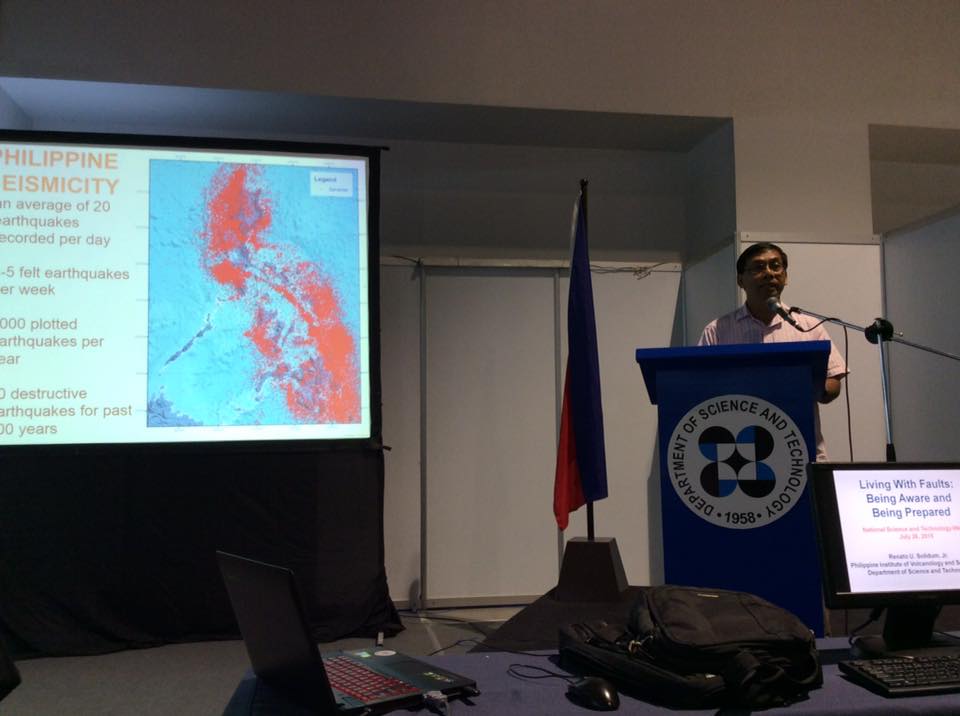
Forum Hall 1, SMX, NSTW 2015. (Photo from Phivolcs’ Facebook page)
MANILA – Philippine Institute of Volcanology and Seismology (Phivolcs) is further pushing the frontiers of technology to help better build resilience to earthquakes nationwide.
Phivolcs Director Dr. Renato Solidum said the agency plans launching this year an application that’ll provide the distance between its users and Philippine faults nearest them and their villages or ‘barangay’ settlements.
He noted information from the fault finder application – which Phivolcs made to be accessible even through mobile phones – will help increase people’s awareness about such rock fractures as these can trigger earthquakes.
“If we’re able to anticipate what can possibly happen, we can better prepare for this,” he said on Monday at a forum in Metro Manila.
The fault finder application will provide scientific information people can use to prepare for earthquakes accordingly, he noted.
“Preparation must be science-based since if people just do their own thing and an earthquake strikes, their action might not be appropriate,” he added.
Solidum said Phivolcs already developed the fault finderapplication in collaboration with this agency’s Filipino partner from Geological Survey of Japan.
“We’re already testing the application,” he also said.
He’s optimistic the fault finder’s launch will facilitate people’s tracking of faults near them and their communities.
Earlier, Solidum noted earthquake preparation must be a way of life for people nationwide.
The Philippines lies along tremor-prone Pacific Ring of Fire, he said, referring to the area experts identified as being among the world’s most geologically active.
Such ring partially encircles the Pacific Ocean.
Experts already warned the Pacific Ring of Fire is dotted with active volcanoes and earthquake sites.
Phivolcs’ Philippine seismicity data show the agency records an average of 20 earthquakes in the country daily.
Between four and five earthquakes are felt per week, the data also show.
The data further show around 90 destructive earthquakes occurred in the country during the past 400 years.
Already ripe for movement is West Valley Fault (WVF) traversing Metro Manila as well as Bulacan, Rizal, Laguna and Cavite provinces, noted Phivolcs.
WVF moved four times in the past 1,400 years, said Solidum.
He pointed out such data indicate movement around a 400-year interval.
A major earthquake in 1658 was associated with WVF’s movement, he noted.
Data further indicate WVF can generate a magnitude 7.2 earthquake, he also said.
Solidum reiterated his call for appropriate earthquake preparation to help lessen tremors’ impact.
One recipe for disaster is failing to anticipate what can happen and how earthquakes can affect an individual, his family and community, he noted.
“People can die because they don’t prepare,” he added.